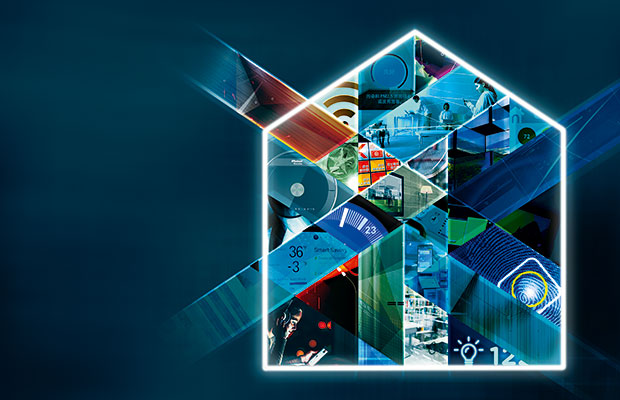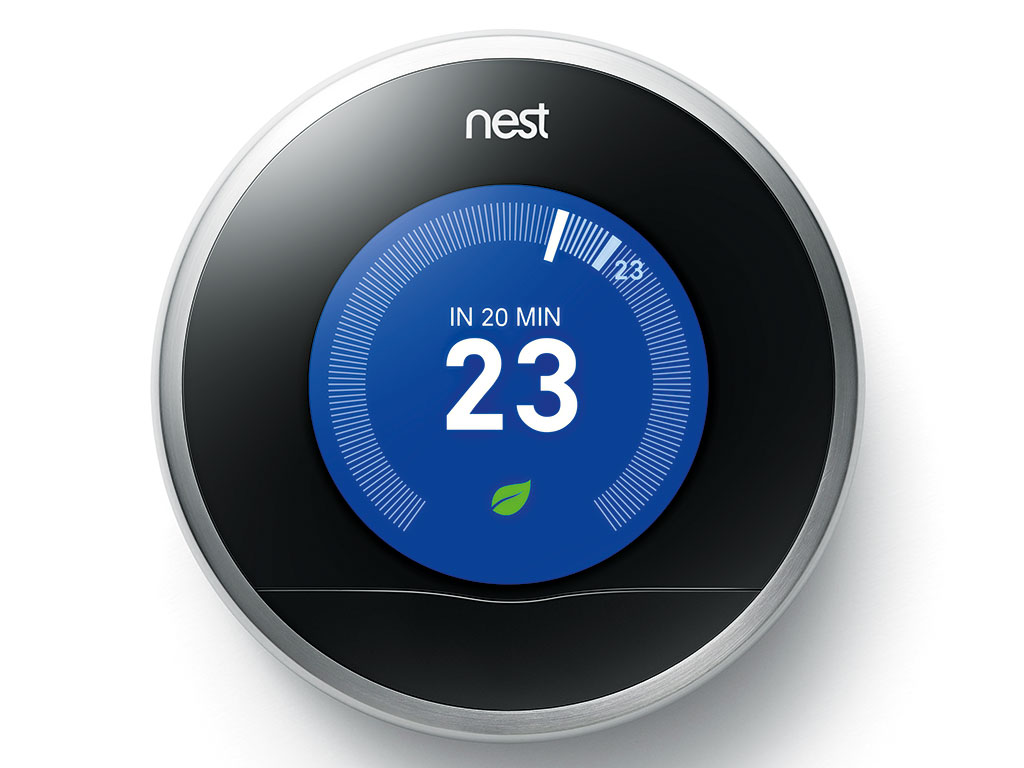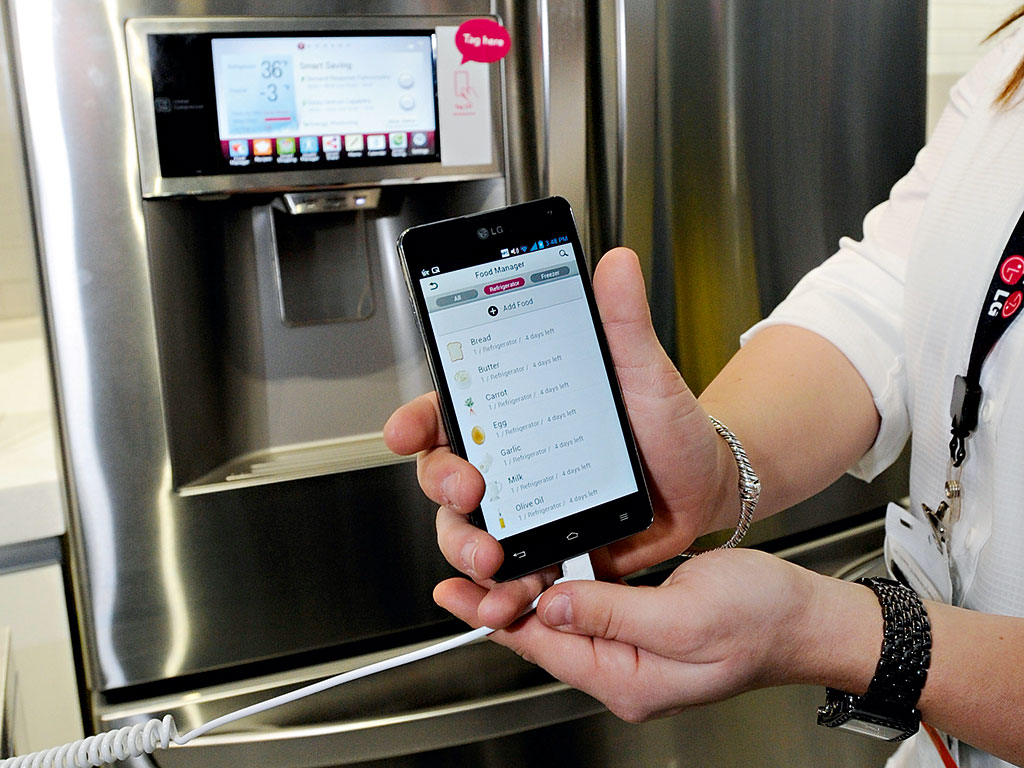The smart home revolution is coming
Smart home technology could transform the way we live. But in our efforts to improve home security, we could be sacrificing our personal security

At the touch of a button, the door unlocks – which triggers the rooms to light up, the heating to come on, the blinds to draw, the kettle to boil and the TV to flicker. A CCTV camera detects an intruder and sends an alert to a tablet 2,000 miles away, while an empty fridge places an order to restock itself. This isn’t a scene from a 1980s thriller – it’s a house in the age of the smart home.
“For many, it’s still just a vision. But change is coming, and coming fast”, Samsung Electronics CEO Boo-Keun Yoon promised attendees at the IFA Electronics Show in September. According to Yoon, smart home technology could catch on as quickly as smartphones did – and his claims aren’t unsubstantiated. Strategy Analytics say 40 percent of homes in the US, and 12 percent across the globe, will have some form of smart home technology installed by 2019, with revenues expected to hit $115bn.
“Market research is showing very strong demand in terms of smart homes in the coming years”, says Kevin Wen, President of D-Link Europe, one of the latest in a string of companies to jump on the smart home bandwagon. But as the internet of things and fully automated homes move closer to becoming a reality, so privacy and security becoming increasingly important issues.
40%
Of US homes will have smart technology by 2019
$115bn
Smart home revenues by 2019
26bn
Smart connected devices by 2020
Rising market
This fast-growing uptake is being driven by the increasing accessibility and affordability of smart home technology, with all the major phone companies involved: in 2014 Apple announced HomeKit, a system which opens the door for all devices to be controlled from one app; Samsung acquired US start-up SmartThings; Google bought smart system maker Nest (for a hefty £3.2bn); and LG announced HomeChat, which lets users command their devices via text. Having a conversation with your fridge isn’t just LG’s idea: Samsung and Apple aim to let users physically talk to their devices using S Voice and Siri respectively.
These recent developments mean home automation is no longer limited to the type of swanky New York pad where James Bond might sit sipping a martini. “Nice, fairly normal homes now have a level of technology that would have only been in exclusive homes 10 years ago”, says Malcolm Stewart of Kensington AV, a luxury home technology consultancy and installer. “Nowadays, people have a lot of the control already in their pocket and that’s a big saving.” Whereas users once had to buy smart home devices from one company and pay a premium, they can now purchase from different companies, and whereas home automation technology once had to be hardwired, it can now be easily fitted without the need for a specialist.
That’s not to say having a fully operational smart home won’t still set the buyer back a fair amount. With the market-leading light set (Philips Hue) costing nearly £200 (for three wireless bulbs and a bridge), thermostats costing up to £200, and hefty price tags on things such as door locks and blinds (which currently need to be specially made), a fully operational smart home is likely to dent a homeowner’s budget by at least £1,000. That might explain why the smart home market is still somewhat niche, with tech enthusiasts making up a large part of those interested (32 percent, according to the 2014 State of the Smart Home Report by iControl).
But those prices are still a significant drop from the multi-thousand pound price tag just a few years ago and they are likely to continue falling, expanding the grip of invasive smart tech to a wider demographic. Smaller companies offering basic, simple-to-use alternatives are springing up: smart plugs costing as little as £20 can be connected to appliances. According to Wen, that simplification of smart home tech is likely to appeal to older consumers too: the impending revolution is likely to sweep over all ages and levels of society.
Peter Middleton, Research Director at technology advisory firm Gartner, believes component costs are likely to fall significantly by 2020 “to the point that connectivity will become a standard feature”, according to a statement. “This opens up the possibility of connecting just about anything… to offer remote control, monitoring and sensing.”
Internet of things
Connecting anything – thereby establishing a world dominated by the internet of things – is a daunting prospect but it’s an inevitable one. Gartner predicts the number of connected devices will increase to 26 billion by 2020: nearly 30 times the number in 2009. It seems a further cog in technology’s mission to dominate our lives, and a world where your fridge could be connected to a random appliance over the other side of the world is arguably a step too far.
But it’s a world some of the biggest tech firms are gleefully leaping into. Nest, Samsung and Arm have joined up to create networking protocol Thread. “We wanted to build a technology that uses and combines the best of what’s out there and create a networking protocol that can help the internet of things realise its potential for years to come”, says their website. Other companies, such as wireless firm Zigbee, are developing their own systems. Allseen Alliance, made up of some of the world’s biggest names (including LG, Panasonic and Microsoft) has produced AllJoyn protocol with the same goal in mind.
The biggest effort out there is Hypercat, an open protocol that, unlike the characteristically exclusive Apple HomeKit, seeks to allow all phone and hardware companies to be compatible by standardising their interfaces (which currently limit specific hardware to specific software). Comprising Intel, IBM, BT and other major players, the consortium wants to create a set of open APIs and data formats so that devices can effectively talk to each other. The UK Government’s tech strategy board has injected £6.4m into the project to drive smart home growth and spur the advancement of smart cities – something also being pushed by the EU.
Darker side
According to Dr Paolo Pirjanian, Executive Vice President and Chief Technology Officer of iRobot, a robot could be at the centre of that interconnectivity. “Leveraging the internet of things, I believe that robots will one day coordinate with other devices and technologies in the home”, he says. “We expect to see robots… playing an even larger role in our everyday lives”. That might seem an ‘out-there’ concept, but the type of specifications being developed by Hypercat (resembling those which created the web, according to the consortium) are fully plausible, paving the way for technology to effectively replace the human at the centre of the home: not necessarily a reassuring concept.

It’s also not necessarily a practical one; making a home entirely reliant on its internet connection is likely to pose problems. “If you live in the countryside and have a rubbish internet connection you’d find it very frustrating using a lot of these devices”, says Stewart. According to him, efficient smart home automation would likely require improved wireless systems.
That could mean further costs incurred by homeowners, ironically defeating the object of saving money that’s frequently cited as an advantage of things such as smart heating. Relying on one single device for all appliances is also risky, and it’s likely to make us more reliant on smartphones and tablets than ever before. That could intensify the health risks mobile phone usage already presents, which include disrupted sleep as a result of the melatonin-suppressing blue light emitted by digital screens.
Getting flooded with notifications for every single device in the house could also be both irritating and disruptive; something even Jack Schulze, head of Berg’s Cloudwash project, recognises. “We suddenly realised that there was this slightly miserable, dismal universe where all your machines were talking to you”, he said, according to a report by Wired. As a result, Berg added a button to turn off the notifications, ultimately de-smarting it: ironic proof that smart home technology might not be all it’s cracked up to be.
The main use of smart home technology seems to be providing another way for mobile giants to monopolise the market and dominate our lives. That’s particularly true of companies that only offer products for their own system, such as Apple. “Once you’re hooked in that far, it becomes simply another reason why everybody keeps buying an iPhone”, Eric Bodnar, co-founder and CEO of Velvetwire, told Forbes. “Samsung loses market share and more people buy the iPhone for that unified smart home experience.”
Security threat
There are also the significant issues of security and privacy. While having a phone stolen is already risky enough given the amount of private data it could present to a criminal, stealing a phone in the smart home era could mean seeing – and, more frighteningly, controlling – everything in the owner’s smart house, from the tumble dryer to the door locks.
The smart home also opens up opportunities for hackers: something the consortium behind Hypercat has recognised, indicating the need for additional software to protect privacy and avoid users being tracked – in everything they do – by prying apps. Even if such software is introduced, completely safeguarding it from hackers is nigh-on impossible; one only has to look at the extensive list of cybercrimes (such as the Chinese attack that stole 4.5 million US hospital records in mid-2014) to see the very real danger the smart home can present. The bigger its grip, the larger the cyber danger.
HP found in an investigation that eight out of 10 smart systems reviewed accepted logins that could be guessed and hacked fairly easily, while six did not encrypt data for software downloads. “Users are one network misconfiguration away from exposing this data to the world via wireless networks”, the report concluded.
In January 2014, smart fridge hackers sent 750,000 spam emails, according to TechRadar: 100,000 smart devices, including TVs and media players, were implemented in the attack. In July, Australian company Lifx was forced to modify its Wi-Fi light bulbs after it was discovered hackers could identify passwords and usernames with a device masking itself as a bulb.
“It’s slightly shocking to see these brand new internet-of-things devices being created with so many security holes”, Ian Brown, information security and privacy professor at the University of Oxford, told the BBC in response to the HP report.
British blogger DoctorBeet reported in 2013 that his LG Smart TV was monitoring habits and sending unencrypted data over the internet back to LG, despite his having turned off the ‘collection of watching info’ option. Sending data back to manufacturers is common practice and smart technology provides one more means of doing so, according to Stewart. “Companies like Apple and Google already know our birthdays, viewing habits and search histories – soon they will even know what time we go to bed and what time we leave for work”, he wrote in a TechRadar article. “These companies will no doubt try to use this information to gain control of an even bigger portion of the market.”

Marketing ploy
Given the security and privacy issues, it’s ironic security is one of the factors fuelling the growth of the smart home market. It was among the top priorities for 90 percent of those asked in the iControl survey. Companies are playing on that aspect, with firms such as D-Link offering CCTV monitoring systems and motion sensors which can trigger a light to scare off an intruder, and send a notification to alert a smart device user out of the house. But being alerted to a fire or burglar is unlikely to help a homeowner thousands of miles away – and no device (yet) would be powerful enough to physically stop either event.
Yet more worrying is the prospect of using smart home ‘security’ systems to replace human supervision. Nearly one-fifth of those asked in the iControl survey claimed they would be more inclined to leave their children at home alone from a younger age if home automation systems such as live CCTV, locks and lights were in place. Given the fallibility of this technology, that could actually mean decreasing personal and family security.
Energy saving is another frequently cited advantage. “Energy cost is going to keep going up, and I think that will definitely create a large market”, says Stewart, with users able to turn their heating on remotely just before returning home – but, again, that is actually likely to increase energy usage. Advanced heating systems such as Nest’s Learning Thermostat (which memorises the user’s patterns and acts accordingly) are certainly clever, but unlikely to save any more energy than simply programming a thermostat to come on at the right time.
The real purpose smart home technology seems to serve is convenience. Voice-controlled appliances, blinds drawing at the tap of an icon, appliances turning on or off based on your location, and washing machines controllable via text message (being made a reality by London start-up Berg and its impending Cloudwash machine) all seem to have convenience (and arguably laziness) as their ultimate driver. Jim Johnson, Executive Vice President of iControl Networks, said in a statement: “The convenience associated with a connected home will likely play a greater role as consumers realise how much easier automation makes their lives.”
It seems the security and energy aspects serve as an effective marketing ploy more than anything else, masking the real factor likely to drive growth: convenience. Whether that’s worth the security threats smart technology could paradoxically create is questionable. Linking the whole of the home to the internet means exposing it to wider dangers – and intensifying them by creating the possibility of every single aspect of somebody’s life being watched, collated and used. Regardless, the internet of things is coming ever closer. Juniper Research predicts the smart home market will be worth $71bn by 2018. Only time will tell how safe our homes are with a computer watching the door.













